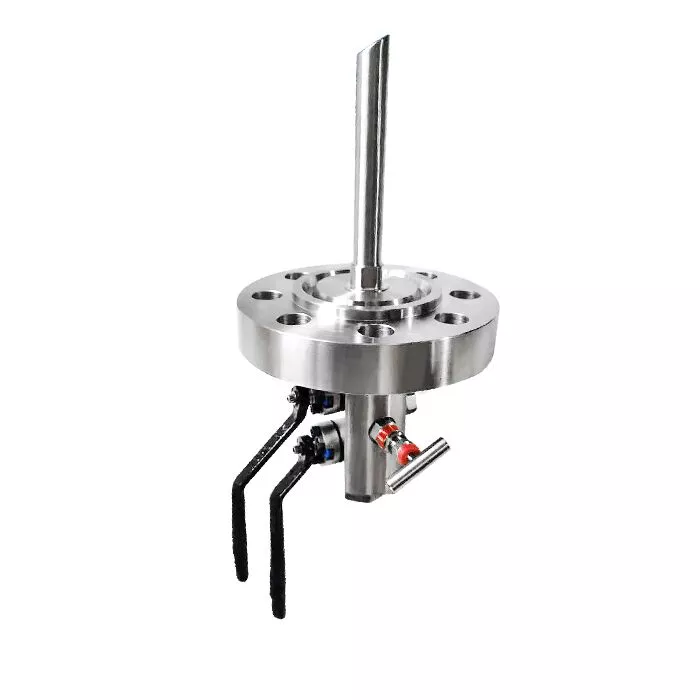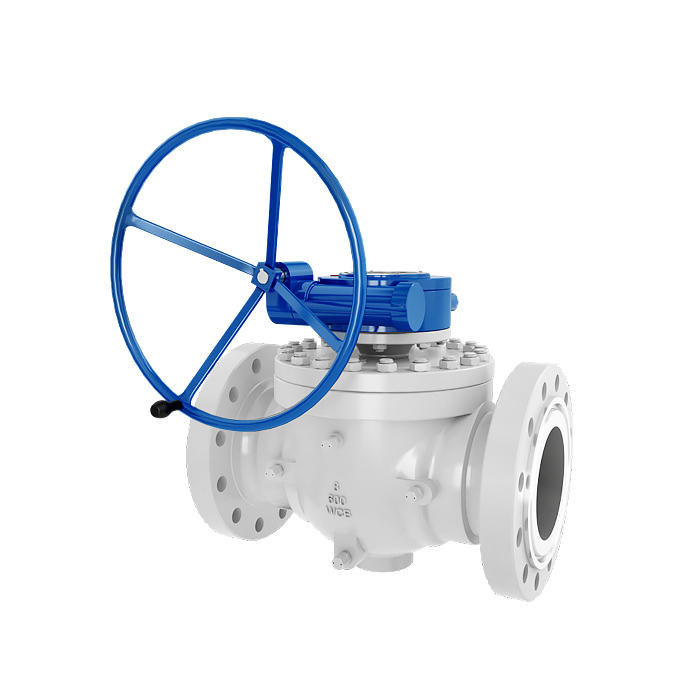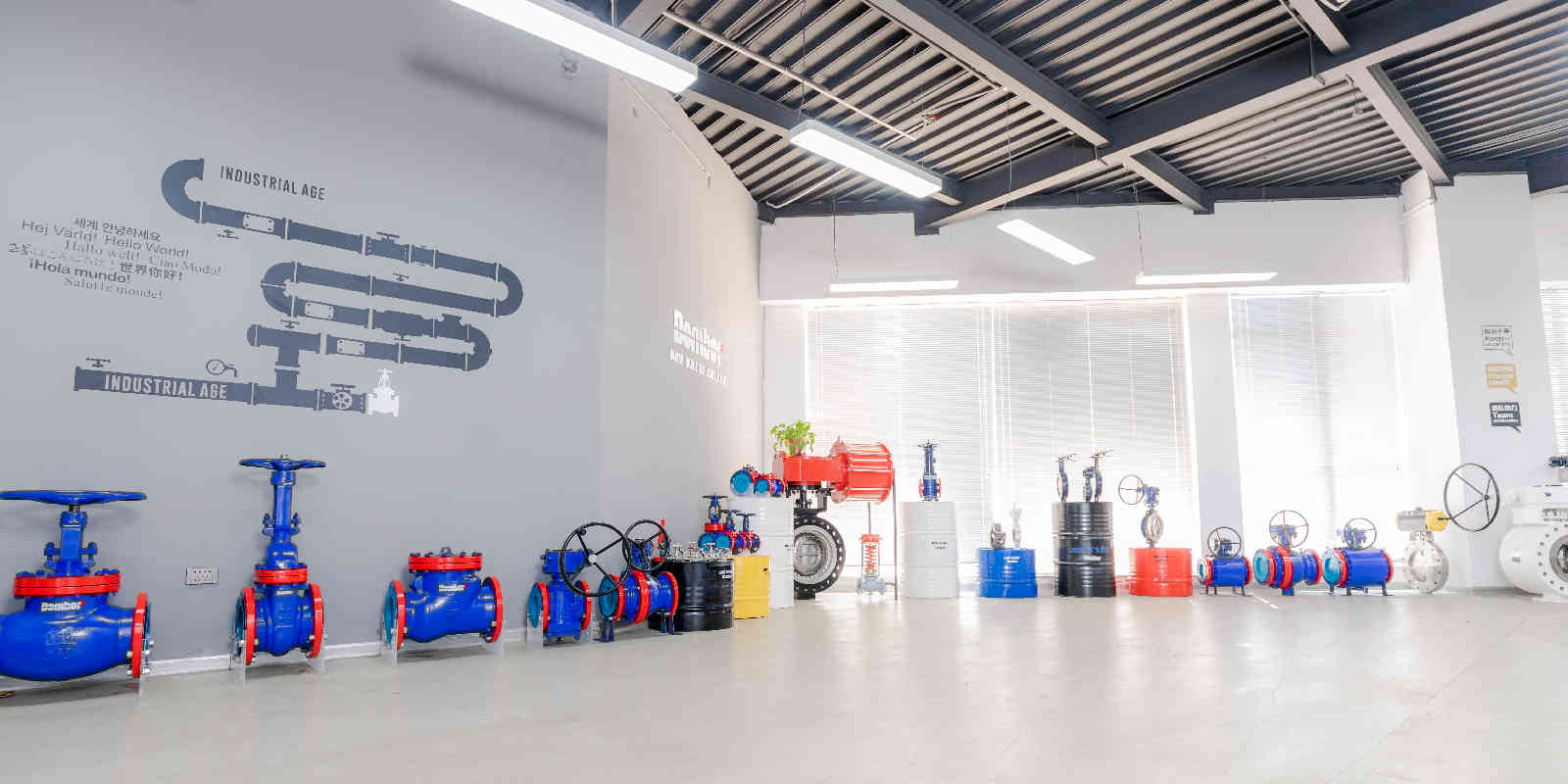Ball valves are commonly used in a variety of industries, including oil and gas, water treatment, and chemical processing. They are known for their durability, reliability, and ease of use. The design of industrial ball valves has evolved over time to include a variety of components that work together to ensure proper operation.

In this article, we will explore the key ball valve components, their functions, and the common materials used in making them. But firstly, let’s get an overview of what a ball valve is.
What is Ball Valve
A ball valve is a type of quarter-turn valve that uses a hollow, perforated ball to control media flow through it. The ball has a hole through the center, which allows fluid to pass through when it is in line with the inlet and outlet ports of the valve. And when the ball is rotated 90 degrees, the hole is perpendicular to the flow path, blocking the flow. For detailed insights into different types of ball valves, learning their subtle differences is crucial for optimal use.

List of Ball Valve Components in Valve Body
Each component of a ball valve plays a critical role in the proper function and performance of the valve, and it is essential to understand the function of each component to ensure proper operation and maintenance.
Below are the various ball valve parts and their functions in ensuring its proper operation and performance:
- Valve body: The ball valve body is the main housing of the ball valve and it contains the ball, seats, and other components.
- Handle: The handle is used to manually rotate the ball to control the flow of fluid through the valve.
- Stem: The stem connects the handle to the ball and transmits the rotation of the handle to the ball.
- Gland nut: The gland nut compresses a packing material around the stem to prevent leakage.
- Inlet port: The inlet port is the passage through which fluid enters the valve.
- Outlet port: The outlet port is the passage through which fluid exits the valve.
- Rotary ball: The ball is arguably the most important component of the ball valve since it controls the flow of fluid. When the ball is in line with the flow path, fluid can pass through the valve. When the ball is rotated 90 degrees, the flow path is blocked.
- Thrust washer: The thrust washer reduces friction between the ball and the valve body, which can improve the performance and lifespan of the valve.
- Joint gasket: The joint gasket provides a seal between the valve body and the piping to prevent leakage.
- Seats: The seats are located on either side of the ball and provide a sealing surface when the ball is rotated to the closed position, preventing fluid from passing through the valve.
- Bonnet: The bonnet covers the stem and packing material and provides access for maintenance.
- Actuator: The actuator is used to automate the valve and can be electric, pneumatic, or hydraulic. It rotates the ball in response to a control signal to control the flow of fluid through the valve.
- Locking device: A locking device prevents unauthorized or accidental operation of the valve.
- Stem extension: A stem extension allows the handle or actuator to be mounted further away from the valve body, which can be useful in hard-to-reach locations.
- Stem protector: A stem protector protects the stem from damage or corrosion.
- Cavity filler: A cavity filler is used to fill the cavity behind the ball in a full-port ball valve, reducing the risk of fluid buildup and damage to the valve due to thermal expansion.
- Drain valve: A drain valve allows fluid to be drained from the valve and piping system for maintenance or repair purposes.
Functions of Ball Valves

Most industries always maintain strong partnerships with a professional industrial valve company that specializes in the manufacturing of ball valves because of their excellent performance characteristics and contribution. Here are some of them:
- Control flow: They are used to control the flow of fluid through a piping system. By rotating the ball within the valve body, the operator can allow fluid to pass through the valve or block the flow of fluid completely.
- Durability: Ball valves are known for their durability and long lifespan. They are made of sturdy materials that can withstand high pressures and temperatures, making them suitable for a variety of applications.
- Sealing: The seats, which are typically made of materials that are resistant to wear and tear provide a tight seal when the valve is closed, preventing fluid from leaking through the valve.
- Low torque: They require less torque operation than other types of valves. This makes them easier to operate manually and reduces the amount of force required to open or close the valve.
- Reduced maintenance: Because ball valves are durable and have few moving parts, they require less maintenance than other types of valves. This reduces the cost and downtime associated with the ball valve parts maintenance and repair.
- Automation: Ball valves can be automated using electric, pneumatic, or hydraulic actuators. This allows for remote operation of the valve and can improve the efficiency and safety of the system.
Popular Materials for Making Ball Valve Parts
When making ball valve components, valve suppliers use a variety of materials, depending on the application, the fluid being transported, and the operating conditions. Here are some of the popular materials used for making them:
- Stainless steel: This is a popular material for ball valve parts due to its excellent corrosion resistance and durability. It is commonly used in applications involving harsh chemicals, high pressures, and high temperatures. Stainless steel is also easy to clean and maintain. However, it can be more expensive than other materials and may be subject to stress corrosion cracking in certain environments.
- Brass: This is a commonly used material due to its affordability and ease of manufacturing. It is often used in low-pressure applications and is suitable for use with water, oil, and gas. Brass is also resistant to corrosion, but not as durable as stainless steel.
- Chrome: This material is commonly used for plumbing application ball valves because of its affordability, resistance to corrosion, and easy installation. However, the chrome plating can wear off over time, and the valves may be prone to leaks.
- Bronze: This is a popular material for making ball valves because of its excellent resistance to corrosion and durability. It is often used in seawater applications and also suitable for use with oil and gas. However, bronze valves can be more expensive than other materials and may require more maintenance to prevent corrosion.
- Titanium: This is a high-strength, lightweight material that is often used in applications where weight is a concern, such as in aerospace and military applications. It is also resistant to corrosion and can withstand high temperatures. However, titanium ball valves can be expensive and may be subject to galling, which can cause them to seize up.
- PVC: This is a popular material for ball valves used in low-pressure applications, such as in irrigation and aquarium systems. It is lightweight, affordable, and resistant to corrosion. However, PVC ball valves may be prone to cracking in cold temperatures and are not suitable for use with hot fluids.
- PTFE: This is a fluoropolymer material used in ball valve seats and seals. It has excellent chemical resistance and is non-stick, making it suitable for use with corrosive fluids and high-purity applications. However, PTFE may not be suitable for use with high-pressure applications, as it can deform and lose its sealing properties.
Contact a One-stop Ball Valve Solution Provider – Dombor
Dombor Valve is a specialized valve manufacturer with specialty in offering all-around services. Having a large production factory fully equipped with cutting-edge machinery and highly-skilled staff, we serve as a one-stop valve solution provider, meeting clients’ needs under one roof.

As a leading ball and butterfly valves manufacturer with vast knowledge about various Industry requirements, we make use of the best materials to ensure that you get high-quality valves for optimal operating results. With this, we help you reduce future expenses, such as maintenance, repairs, and replacement of valve parts.
Conclusion
Ball valves are an essential component in many industrial processes, and their design has evolved to include a range of components that work together to ensure reliable operation. Understanding the function of ball valve components will enable you to take note of the various parts for better maintenance and repair. For more details, please refer to our complete guide to ball valve.
More importantly, getting quality ball valves made by a professional manufacturer will save you from the hurdles that could happen. You can contact us for your functional ball valves with high-quality parts.









